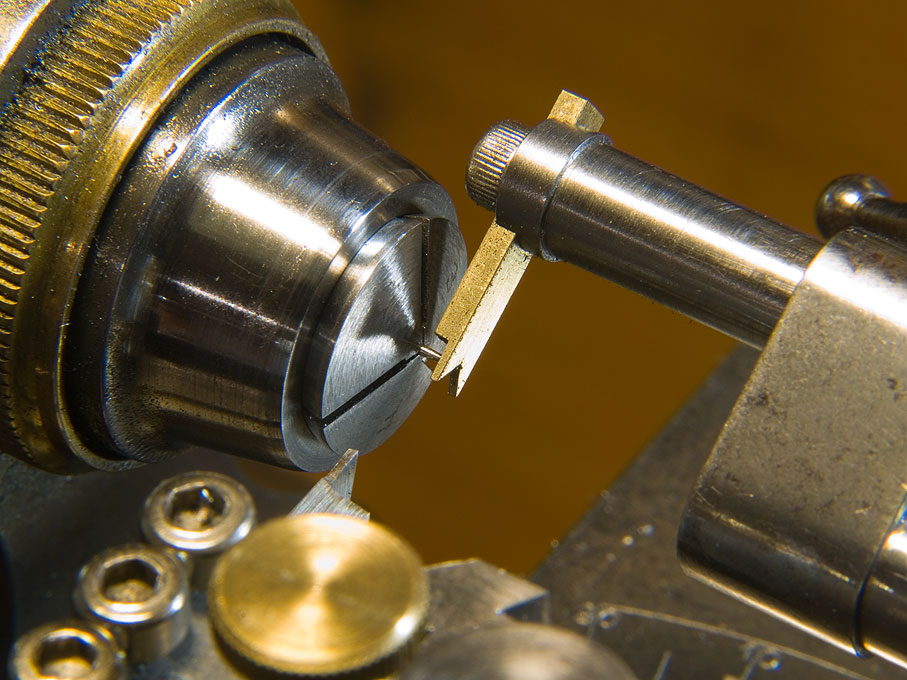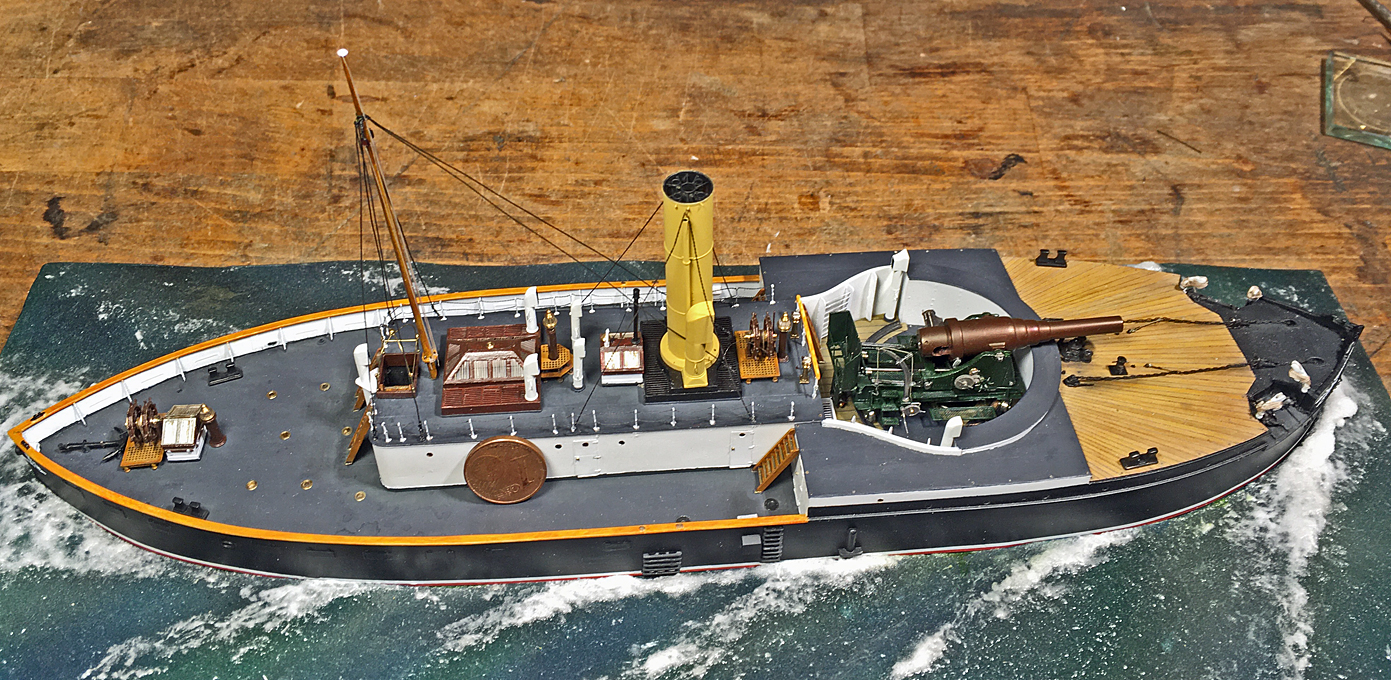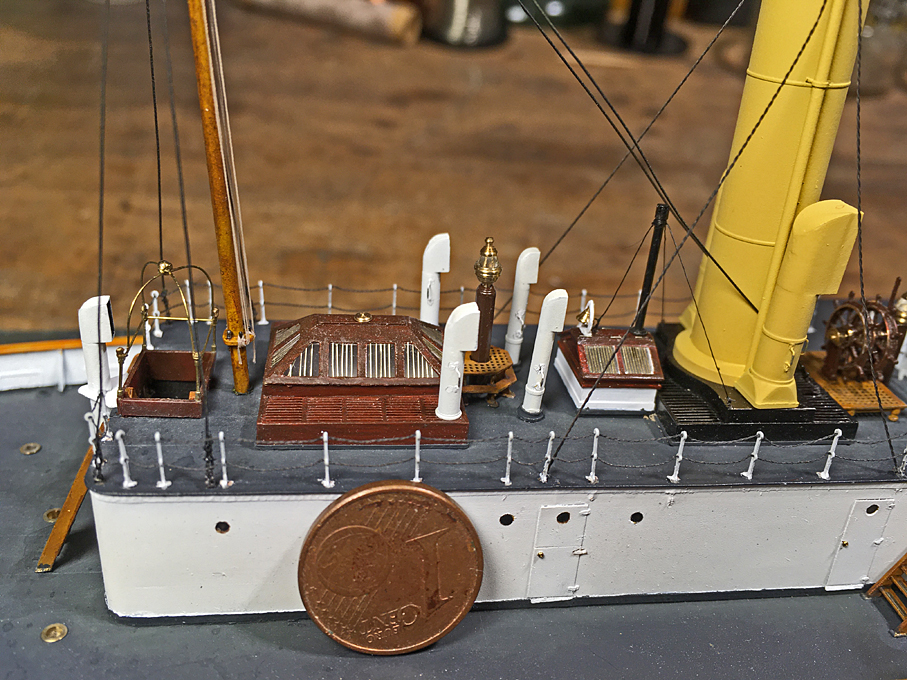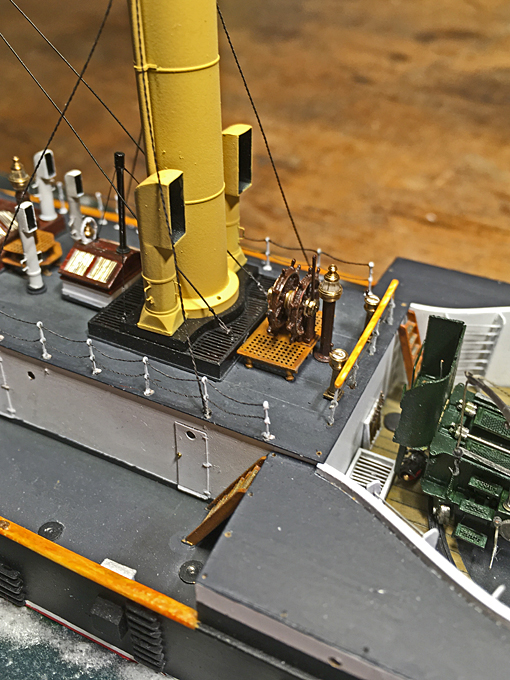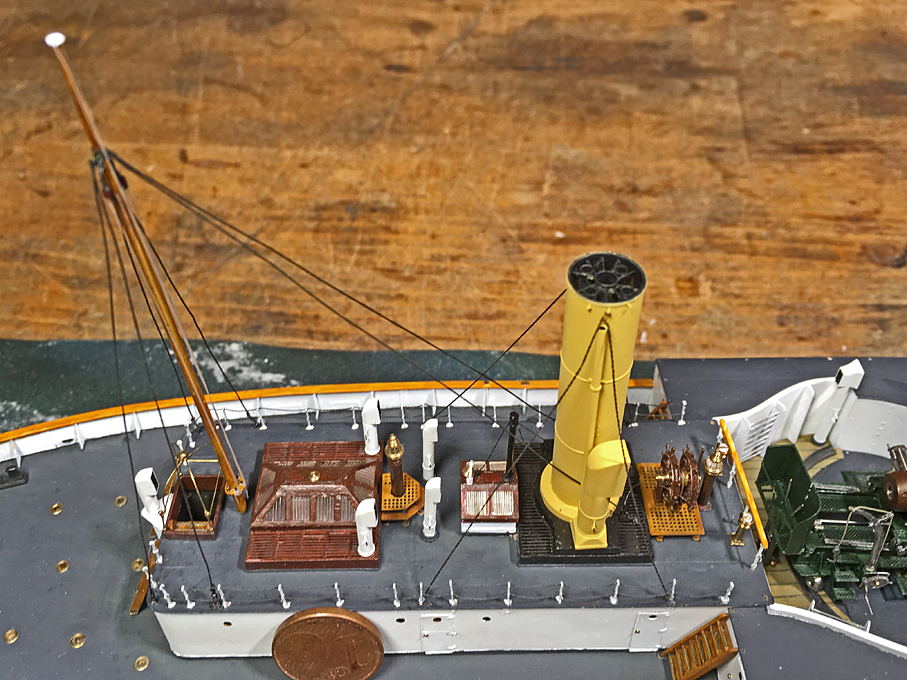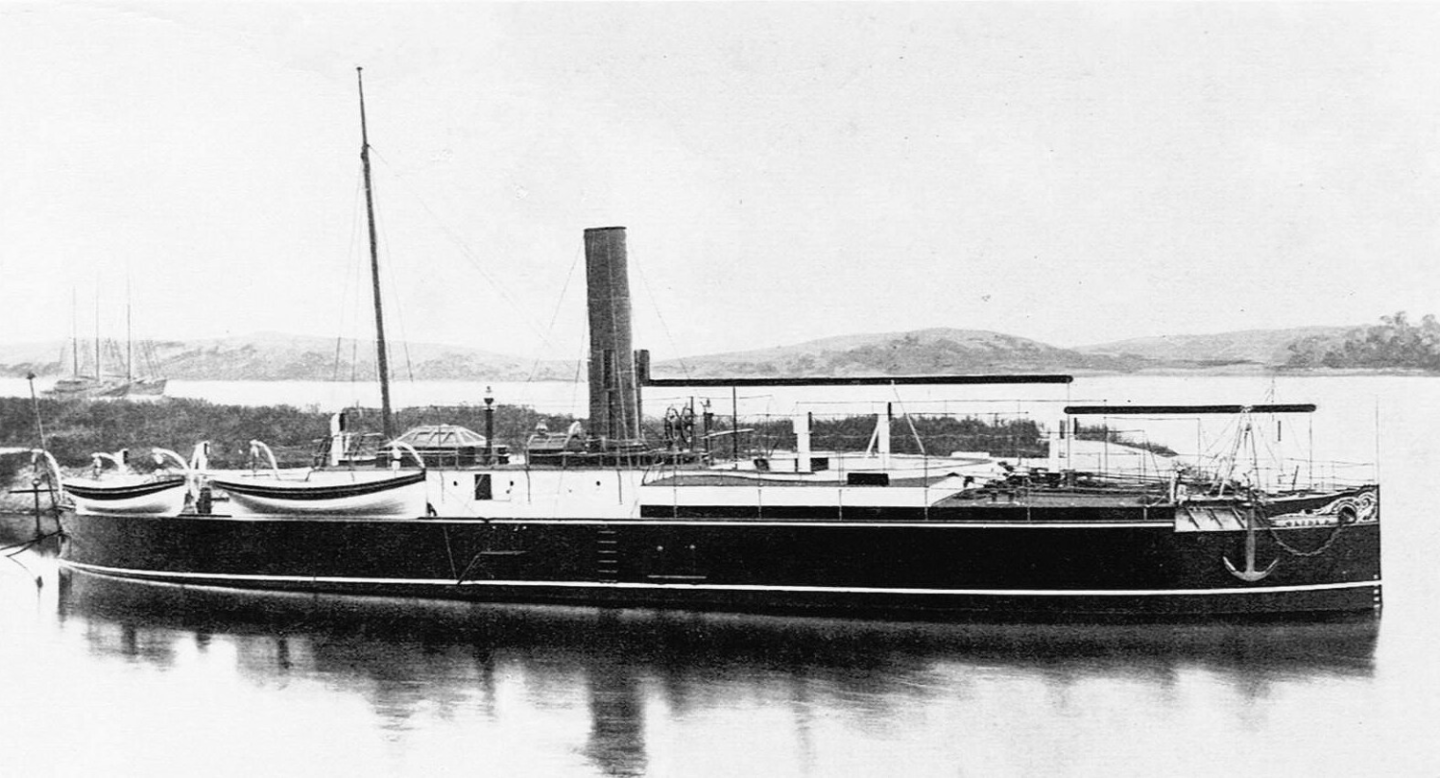-
Posts
6,648 -
Joined
-
Last visited
Content Type
Profiles
Forums
Gallery
Events
Everything posted by wefalck
-
Exactly, you don't want to red-design the hull, but only to develop intermediate bulkhead/frame stations. That's why I suggested the above procedure that only requires basic drawing tools. You can actually substitute the flexible ruler with a piece of stiff copper wire that you straighten first and then bend to the desired shape. Very thick soldering wire would also work. It has to be just some wire that is not springy.
-
The 'wet' look comes about because a film of water fills any surface-roughness and sort of directs the incoming light deeper into this roughness, much like an optical fibre. As a consequence, less light is reflected from a wet surface than from a dry surface and it appears darker. Glossy surfaces don't look 'wet' unless there are water drops on them. You can recreate this effect by applying a coat of clear varnish over the areas that you want to look wet. Depending on the situation, glossy varnish is not necessarily the best. Some satin varnish might be better. You don't want to look the area as rubbed with some lardon. The effect also depends on how matt or satin the surface has been to begin with. The glossier the surface is at the beginning, the less appreciable the 'wetness' will be (see comment above). On painted surfaces I have started with satin varnish, perhaps mixed in some gloss varnish at places to create variation and sometimes added acrylic gel to show some water running off. Move the ship around to watch the effect from different angles.
-
Mast rake (relative to the CWL) was pretty much a fashion fob, but at least on single-masted vessels can also change the sailing performance. Up to the early decades of the 19th century masts were only slightly raked as per Allan's example above. From the 1830s on a fashion kicked in, where mast were given much more rake, particularly on ships that were supposed to be fast and had to look fast. This fashion died out again in the 1860s/1870s. That said, there are many vernacular craft around the world, including Europe, that have wildly raked masts and not only backwards leaning, but also forward leaning (think of some Portuguese craft for instance). There was probably a good practical reason for this, but that may have been long forgotten, as similar craft in other regions may not have such rigs and still perform well.
-

Strake Widths
wefalck replied to bwross11's topic in Building, Framing, Planking and plating a ships hull and deck
In the later 19th century, navies and commercial surveying boards (say the Germanic Lloyd) established rules and recommendations for minimum(!) plank/strake widths and lengths for certain areas of the hulls. The underlying reason was that sufficiently large trees became scarce and, therefore, expensive. Builders and owners understandably tried to cut costs, but this was at the expense of strength. Also narrower planks means more seams to be caulked and, hence, higher risk of leakage. -
As you have the drawings for the bulkheads and know where the 'stations', i.e. the locations of these bulkheads are, you can develop a body-plan for the boat from that. For this you have to arrange the bulkhead outlines on top of each other and against a reference plane, probably the keel in your case. Draw a vertical line that separates the two halves of the bulkheads. Then you draw horizontal lines (the projectsion of water-lines) across the bulkheads. If you opt for bread-and-butter construction, the lines should be at the distance of the thickness of the material you intend to use. Now you can develop the waterlines from this in plan-view. You draw the central line, the plane of the keel and vertical to this a line at each 'station' of the bulkheads. With a compass you measure along each waterline the distance from the center-line to the outline of the bulkhead and transfer this distance to the station of the respective bulkhead and mark that point. You repeat this for each bulkhead. Then you can join all these dots with a flexible batten or bendable ruler to get a nice smooth curve. Note that in places these waterline will probably be not only convex but become concave, particularly at the boat's ends. You repeat this process for all waterlines. Now you have a nice body plan for your boat and can proceed to draw additional stations to fill the gaps between the existing stations. The next step is to repeat the above process, but in inverse. For the new stations you take off the distance of the waterline from the central line and mark the respective point in the drawing with the bulkheads. Repeat this for each waterline that intersects this new bulkhead and connect the points with a smooth curve - and you have a new bulkhead! Repeat for each new bulkhead you want to have. There is really no magic in this, just some careful drawing with a minimum of tools.
-
Ah this kind of tools that are used in tailstocks or revolver-heads in 'Swiss lathes'. I have a sort of miniature version for my watchmakers lathe that works with bushings and is used to cut watch stems or screws without putting lateral pressure on slender parts. Some of the woodworkers' dowel-cutters are designed in a similar way.
-
Denis, I don't think 'scratchbuilding' is so much more complicated than working with a kit. It's question of doing things systematically. Didn't the proposal of bread-and-butter construction come up in earlier discussions? One of us may have mentioned it as a method for making a core from which to take an empty hull using GRP. It can be relatively materials- and cost-friendly, as one can use insulation foam-board for the core that is to be discarded. Fairing the core between the template stations can be done by eye. However, you have to learn working with glassfibre mats and polyester resin.
-
I made for my watchmaker's lathe a smalled fixed steady: https://www.maritima-et-mechanika.org/tools/attachments/attachments.html#Micro_steady, but the same concept could be used for a travelling steady somehow attached to the cross-slide. The principle is similar to the one you showed earlier, but instead of bushings of various size, a V-notch is used. Travelling steadies are difficult to install on a watchmaker's lathe, as the longitudinal slides sits on the cross-slide, so that the steady would move out, when you feed in the tool.
-
I know of this technique, one puts the masking tape, where the inside strakes will be and the fills the space in between to represent the outside strakes. I have never used the technique myself, but would be concerned about the edges of these 'strakes' - they could be quite vulnerable to damage such as chipping. These automotive putty do not have a lot of cohesive strength in order to allow for easy sanding and in their intended application, there would be no exposed edges.
-
I am wondering, whether it wouldn't be worthwhile trying to develop a lines plans with more stations for frames from the rudimentary one that you have. It is really not too difficult and can be done basically with a ruler, a compass and a flexible batten or one of those pliable rulers (that have a lead-core). I think it will safe you a lot of frustration. If you don't have a big enough drawing board, it can be done at half the size or so and then upscaled. I am sure that it will give satisfactory results more quickly and with less materials wastage than the trial-and-error method.
-
It appears the German National Archives/Military Archives have a copy of a draft of 1913: https://www.archivportal-d.de/item/WEHKZZSMAUE3JZGYZHVH4HNR33ZNBEON?lang=en As well as a copy of the 1911 version: https://www.archivportal-d.de/item/QZXZLRGQESUACWL5IDGVTJYGXRXXYPYN An overview over the different German siganl codes since 1800 is given in this (German only) publication, for which an overview is available in PDF: https://dmkn.de/wp-content/uploads/2014/10/Signalflaggen.pdf I didn't see (so far) any digital copy of the code-books themselves. P.S. The code-book in the British National Archives presumably is the one offered to the British on 31 October 1914. It was found on board of SMS MAGDEBURG which ran aground at the coast of Estland. The crew attempted to blow her up, but were only partially successful. Two code-books were found on her, after the remaining crew were taken POW, and a third one that was thrown overboard with some lead attached to it was recovered by Russian divers. These code-books allowed to the Russians and the Western Allies to read the naval communication throughout WWI I think - the loss of the code-books must not have been reported properly to the Admiralty, as all the officers were taken POW (Source: https://de.wikipedia.org/wiki/SMS_Magdeburg_(1911)).
-
These whaling boats were sort of consumables in fact. They were built in early versions of production lines by specialised builders in New England. They were very lightly built boats to make the easy to row and manoeuvre, but also to create as little waves and noise so as not to startle the whales when approaching them. This made them quite vulnerable to physical damage and the whaling-ships always carried a couple of spare boats and material to repair them. As in the old days, tools typically were the property of the workers themselves, a system that made sure that they cared for them and kept them in a good working order. However, harpoons were also a sort of consumable, because they could easily bend or break in use. Lances less so. The ship would carry a good supply of spares including shafts, as the commercial success of the voyage would depend on their availability. There was also a smithy and a smith on board to help maintain and repair these tools.
-
Good (hard)wood is only to some degree a renewable resource - it takes obviously centuries to replenish it not just decades ... we have taken out too much over the past two or three centuries.
-
Interesting project and nice rendering of the boats! In summer 2019 I took quite a few pictures of her in the museum in Oslo, focusing on various details. If you need them, I could email them to you. One has to ignore the strange colours, as the museum guys chose to dramatice the exhibition with variously coloured lights 🤨
-
The method to be used surely also depends on the size of your model spar/mast. Planing something only of a few millimetres in diameter may be physically difficult. I gather a starting dimension of 4 mm across would be about the minimum for planing. Starting with a square stick allows for easy 'indexing' during work. People use a jig in which the stick rests on a corner so that one work down the opposite corner. This leads you quickly to an octogon. Resting the stick now on the corners of the octogon allows you to work it down quickly to a 16-sided stick (hexakaidecagonal stick). Turning long, slender pieces requires a steady to remove flexing. Travelling steady are difficult to use on wood, because they may leave marks, but a fixed steady is easy to contrive for a wood-lathe. In fact a thick piece of cardboard with an appropriate sized hole in it will be sufficient and was often used by old-time machinists. Old lathes did have sometimes a steady to which such cardboard pieces could be clamped. In fact, I have used the flexing in order to produce spars that taper in both directions.
-
I gather, the classic source on whaleboats is ANSEL, W.D. (1983): The Whaleboat.- 147 p., Mystic, Co. (Mystic Seaport Museum Inc.). It has plenty of drawings based on examples in Mystic and on original drawings. If you are building a whaler, this book probably is a must. The ready-made models are probably not based on whaleboats as used in whaling (which were of very light construction), but on the naval boat-type called whaler, which is a double-ended, quite sturdy boat, that was used mainly as a surf-boat, i.e. for accessing coasts without harbours and a strong surf.
-
The company was called C.C. Egelhaaf & Sohn, located in Aalen (Baden-Württemberg). The yarn size is Nm 300/2, which means that from 1 g of material 300 m of a two-ply yarn was made.
-
Interestingly, those silk-wrapped (stranded) wires are available again commercially, as there seems to be a fashion for non-IC and legacy electronics. I also inherited a small stock from my father, who was very much into electronics/electrics. Otherwise, ebay et al. now make accessing such fancy materials much easier than before, when you had to rely on local shops. I have a large collection of wires from different materials from about 0.008 mm diameter upwards. Not everything turned out to be really useful though. One thing I really regret our those threads that were used to mend ladies' nylons. One type is still available, but this is multistranded and fuzzy. This nice, two-stranded tightly twisted stuff is nowhere to be had anymore and the manufacturer in Germany that I knew is defunct. I used to scan fleamarkets for them, but was never lucky in that respect.
-
Thanks, gentlemen, for your kind comments! @Keith Black: I decided on 'hearts' and lashings, as this is what the photograph seems to show for the fore-stays. Not very clear though. Bottle-screws would be longer and thinner. @KeithAug: Caught me red-handed ... yes, the stays and shrouds - unfortunately - are not completely straight. This due to the fact that I used wire and that the anchoring is not that strong. I have used such wires in the past, but could tighten them more and it worked very well. Have to rethink that in the future and perhaps build a serving machine that can handle really thin materials. Also, the only material I had that was thin enough was solid wire, stranded wire would have been better for that purpose.
-
Why would you want them as a pair? AFRICAN QUEEN is purely fictional anyway - see HMS MIMI by Ras Ambrioso ...
-
Thanks again for all the encouragement! ***************************************** Rails continued … I have installed the rails around the deck-house on the starboard-side too. This time a picture with a coin for size reference. In the meantime, a forum colleague made the suggestion to braid the wires instead of double-twisting them. I think I had tried this earlier on, but the copper-wires were too soft and broke to easily. I’ll give it a try again with the Konstantan wire and will report. They used chain on this boat for a lot of things, where today one would find wire-rope instead. Mast and rigging As noted above, my intention was to work ‘inside-out’ when installing the rails, so as not to damage already installed parts. I now realised that I should have installed also the mast and its stays first, before the deckhouse rails. So, it was high time to do it now, before going on with more rails. The pictorial evidence is rather scarce for the early form of the mast. In fact, there is only the very first photograph that shows SMS WESPE being fitted out. All other photographs show later forms, when the mast had acquired a top-mast and a fixed signalling yard. When this was installed is not known. Perhaps around the time of the first minor refit, when the boat-racks were installed, or when she got the conning tower with the search-light on top, as shown by the only other photograph with the black/white/yellow livery (as per 1878 regulations). The mast had been turned a while ago from a steel rod and fitted with belaying pins. Not sure, whether I showed already pictures of this. It seems that there were double stays leading forward to the front of the boiler-casing, but there are no pictures that show how they were fastened and the drawings are silent on this detail. So, I assumed that there must have been ring-bolts rivetted to the casing. In fact, I should have installed this before painting and installing the casing, but did not have sufficient foresight. Hence, they had to be ‘retro-fitted’ now. Then there is a pair of shrouds on each side – quite a few for a simple pole mast. These shrouds seem to have been made fast on eye-bolts between the rail-stanchions on the deck-house, for which there is a vague indication on the drawings. Again, there is no evidence for how they were set tight. I gather it must have been some hearts with lanyards between them. I assume that the stays and shrouds were wire-rope. On some later picture it vaguely looks, as if these ropes had been served all over. To imitate such ropes, I have collected over the years electronic copper wires and stranded wires and are spun with silk (as used in high-frequency coils). I choose a 0.15 mm wire for the purpose here. The silk in my case was green, so it had to be given a light coat of black paint first. Before the shrouds and the stay could go on, the signal halyard blocks had to be installed. I assumed that these were stropped double-blocks, but this is purely conjectural, based on the number of belaying pins. For the signal halyards I used some of my treasured nylon-thread as used in the old days for mending ladies’ stockings – a tightly spun two-ply thread that does seem to be out of production now (better than the fly-tying threads). The lay still was not tight enough, so I twisted it a bit more and stabilised the twist with a light touch of varnish. At that time a steamer should have carried a steamer-light at the mast at night, but the available photographs are not are not clear enough to be sure that it would have been hoisted from a halyard in front of the mast. I just installed the halyard without attempting to model any additional arrangements, such as guiding ropes. The lithograph from the early 1880s also shows a crane for light just in front of the casemate, but it is not visible on the photographs. Making working hearts for the stays would have been asking a bit too much, so I simplified the arrangements and just provided seized eyes at the end of the standing rigging and roved the lanyards through them and directly through the eyebolts. I gather this is good enough at this small scale. It was difficult enough to install all this without destroying other things already put into place. To be continued ....
About us
Modelshipworld - Advancing Ship Modeling through Research
SSL Secured
Your security is important for us so this Website is SSL-Secured
NRG Mailing Address
Nautical Research Guild
237 South Lincoln Street
Westmont IL, 60559-1917
Model Ship World ® and the MSW logo are Registered Trademarks, and belong to the Nautical Research Guild (United States Patent and Trademark Office: No. 6,929,264 & No. 6,929,274, registered Dec. 20, 2022)
Helpful Links
About the NRG
If you enjoy building ship models that are historically accurate as well as beautiful, then The Nautical Research Guild (NRG) is just right for you.
The Guild is a non-profit educational organization whose mission is to “Advance Ship Modeling Through Research”. We provide support to our members in their efforts to raise the quality of their model ships.
The Nautical Research Guild has published our world-renowned quarterly magazine, The Nautical Research Journal, since 1955. The pages of the Journal are full of articles by accomplished ship modelers who show you how they create those exquisite details on their models, and by maritime historians who show you the correct details to build. The Journal is available in both print and digital editions. Go to the NRG web site (www.thenrg.org) to download a complimentary digital copy of the Journal. The NRG also publishes plan sets, books and compilations of back issues of the Journal and the former Ships in Scale and Model Ship Builder magazines.



